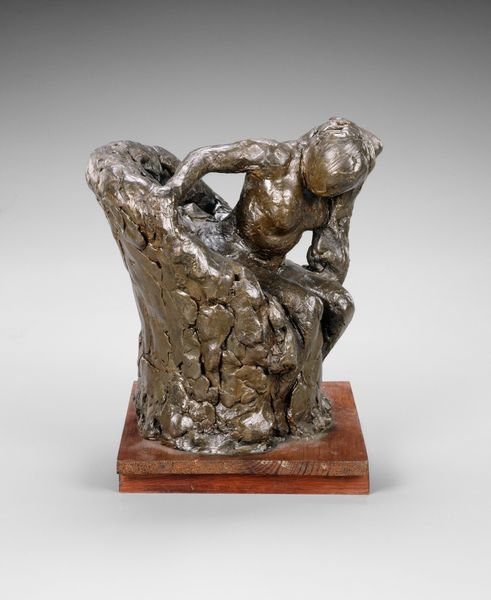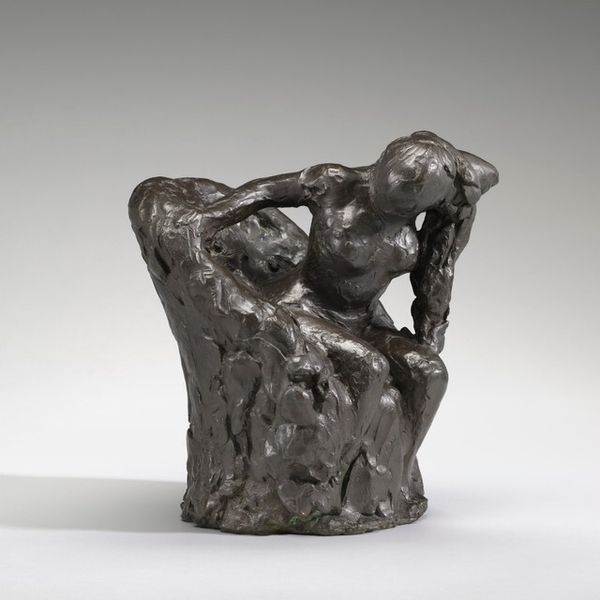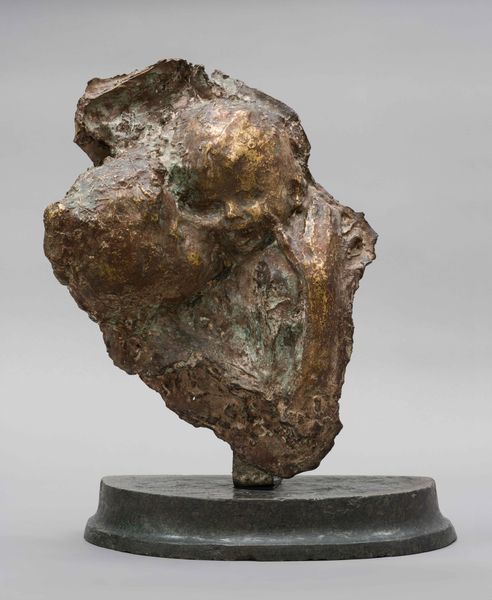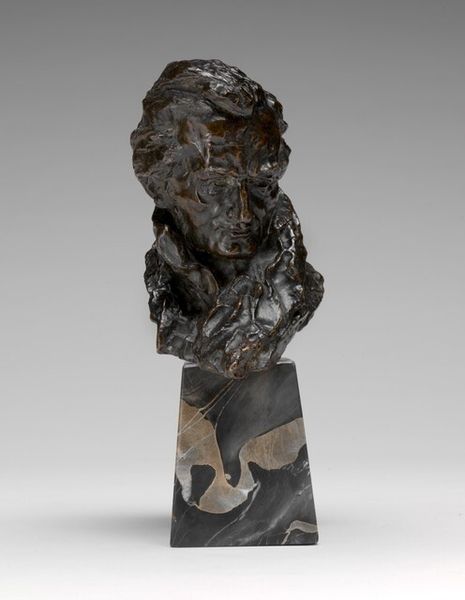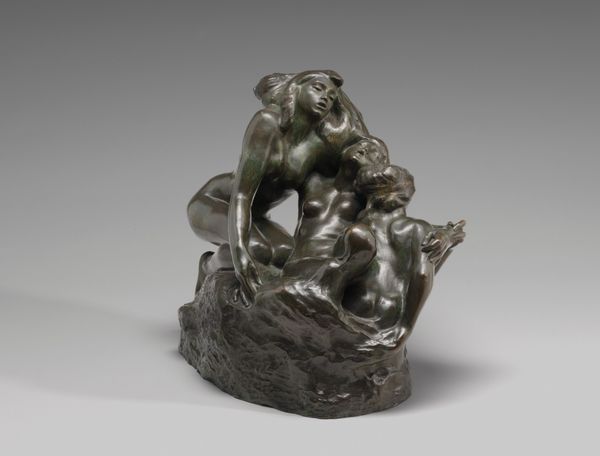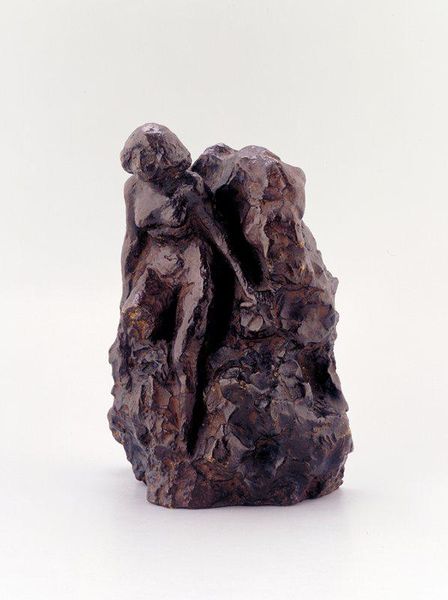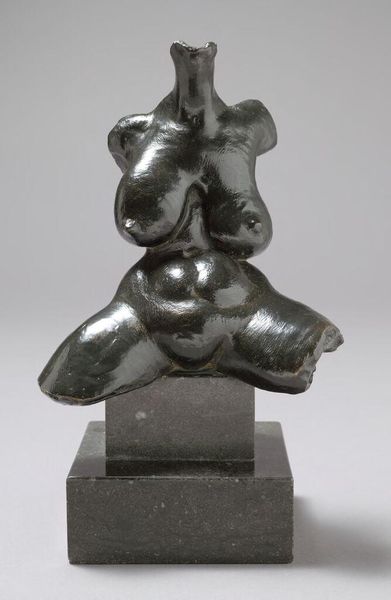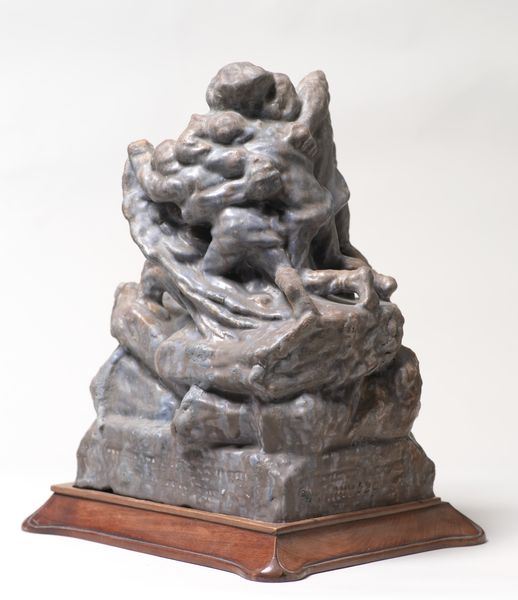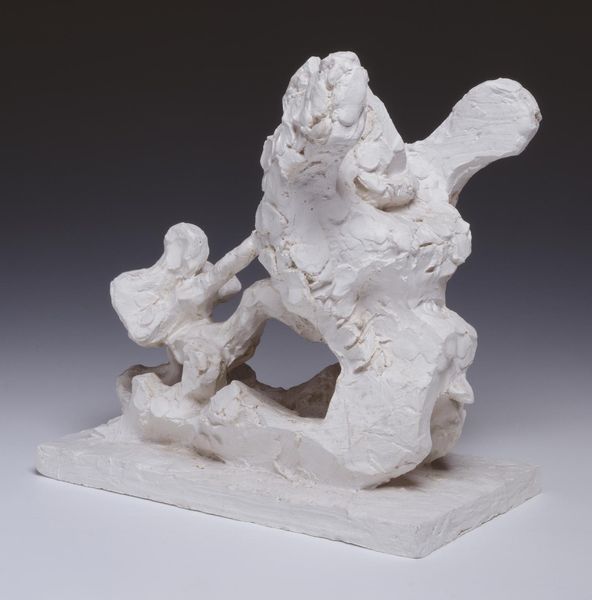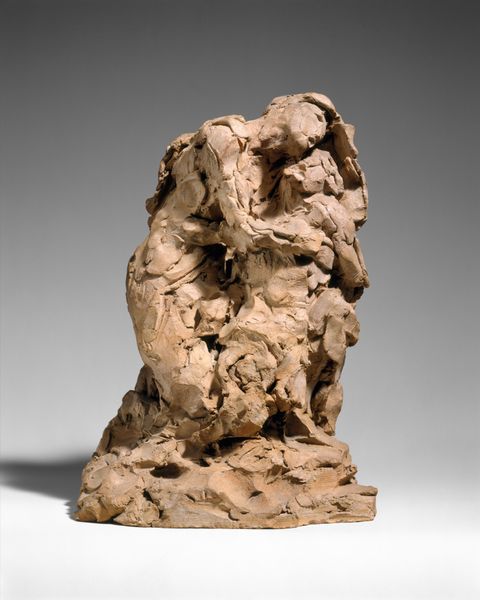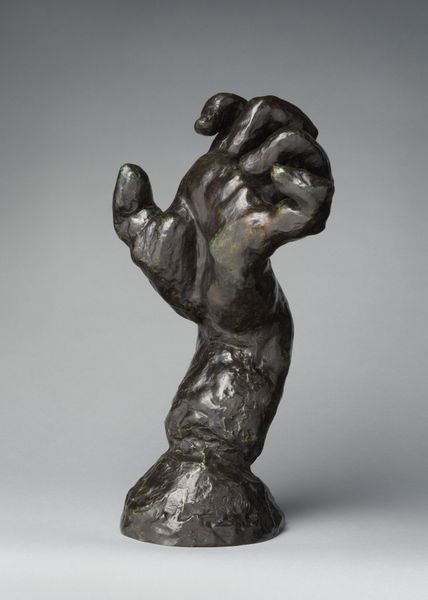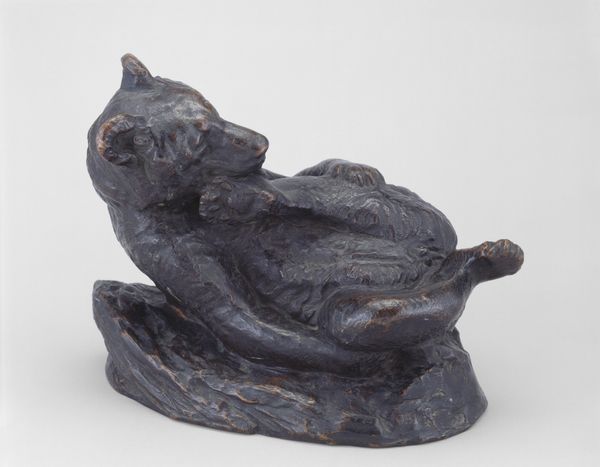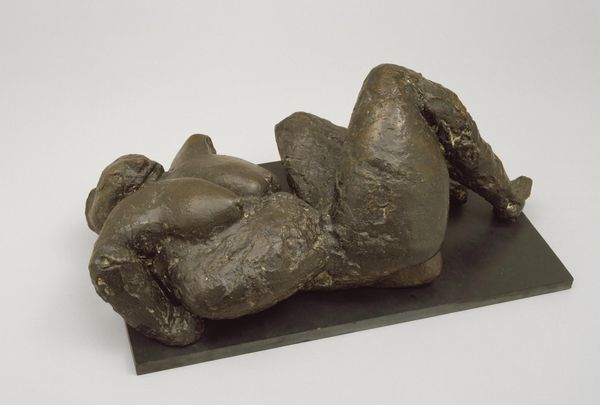
carving, metal, bronze, sculpture
#
portrait
#
abstract-expressionism
#
carving
#
metal
#
stone
#
sculpture
#
bronze
#
figuration
#
sculpture
Copyright: Reuben Nakian,Fair Use
Editor: Here we have Reuben Nakian’s bronze sculpture, "Ecstasy Head," created in 1946. It's intensely textured and the head is tilted back. What strikes me most is its raw, almost primal emotion. What do you see in this piece? Curator: The rough texture evokes a feeling of ancient, unearthed artifacts – objects that whisper stories across millennia. This raw, visceral quality is interesting; what is ecstasy, after all, but a form of losing oneself, a primal state of being? Nakian seems to be exploring how ecstasy is often represented across different eras and traditions through shared, recognizable gestures. What traditions do you observe reflected in this "Ecstasy Head?" Editor: I definitely see influences from ancient Greek and Roman sculptures, perhaps some Renaissance drama. Is Nakian trying to convey the psychological aspect, stripping away idealised beauty to expose a pure feeling? Curator: Precisely! Notice how the face, though distorted, conveys a universally recognizable emotion. Think of the Bacchanalian revels – a release from constraints, a union with something larger. Even in our contemporary understanding, that symbolism of ‘release’ is echoed. Where do you think the power of such representations comes from, bridging these temporal and cultural gaps? Editor: Maybe it taps into our own subconscious understanding of how extreme emotion is expressed? It feels less like a portrait of an individual and more a vessel containing the history of the human experience. Curator: An excellent observation. These are not just individual emotions but rather embodiments of cultural memory. Through the universality of certain visual symbols, cultural memory allows these artifacts to maintain a kind of ‘presence’ over time, echoing our innermost feelings. Editor: I see now how Nakian has channeled art history to showcase enduring motifs in this one work. Curator: Indeed! Recognizing visual lineage highlights the enduring relevance of symbols to reveal aspects of human culture over time.
Comments
No comments
Be the first to comment and join the conversation on the ultimate creative platform.
